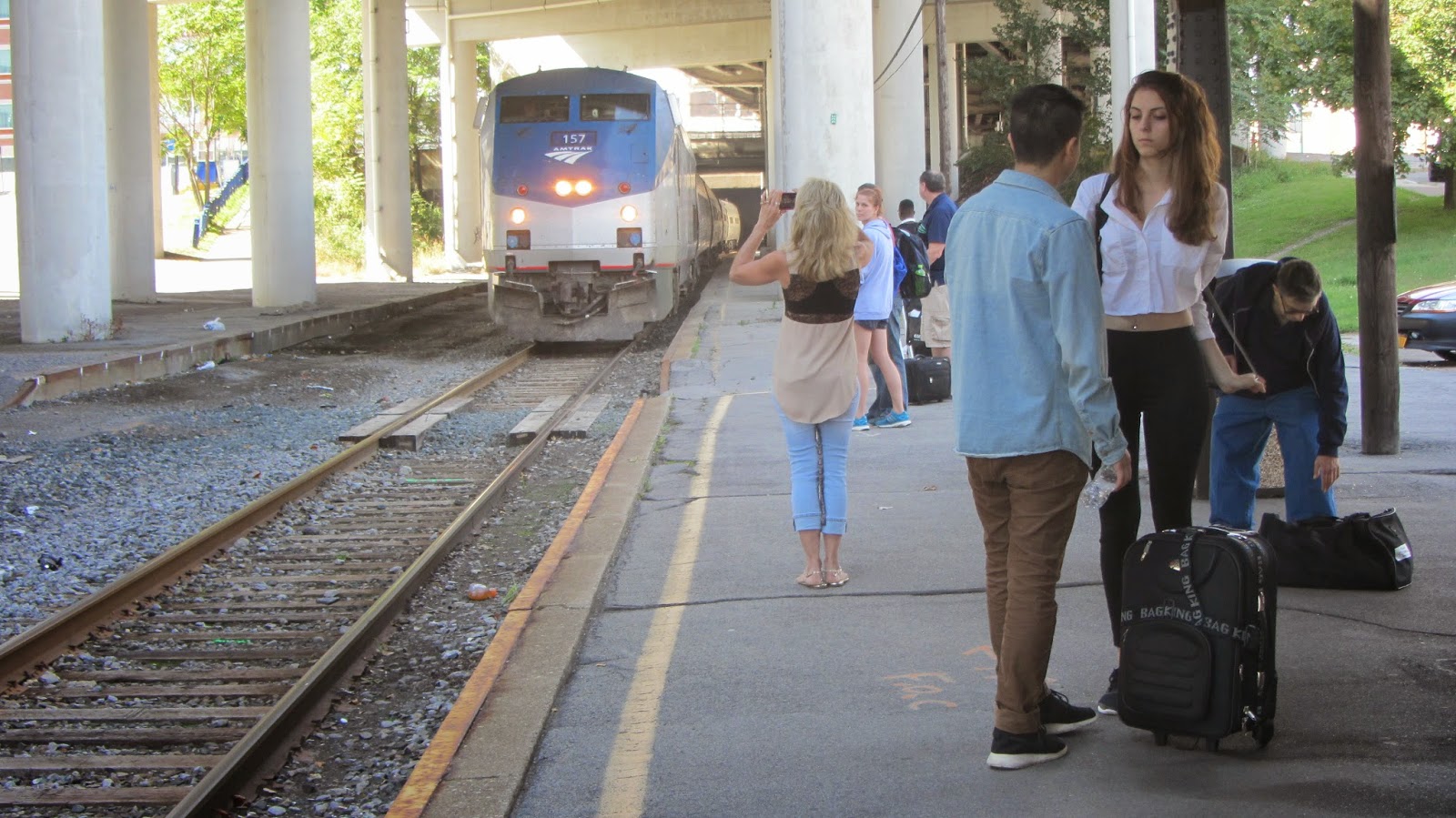On a recent Sunday, after a short
visit to Canada, Spouse drove me to the Amtrak
station at 75 Exchange Street in Buffalo, NY. I was headed to Albany to see my dear childhood friend, and Spouse was going to the airport to return to California. We planned to get to the station somewhat early so that we
could have coffee before I boarded the train for the six-hour trip.
 |
| Amtrak Station, 75 Exchange St., Buffalo, NY |
The small brick train station, in the middle of
nowhere under a maze of high-rise highways, was closed. A sign posted on the door
informed passengers that the depot was open Monday to Friday from 6:30 AM until
4:00 PM. There was no place nearby
to get coffee. Spouse dropped me
off and headed to the airport. I
walked to the other side of the train station to find a few passengers, no
toilet facilities, and no benches.
 |
| Sign telling that the station is closed weekends and nights |
 |
| Closed Amtrak station with no benches for passengers |
At least the day was warm and
sunny. But Buffalo is infamous for
inclement weather. What do
passengers do if they’re sick, need a toilet, need to sit down, or get refuge
from cold rain or the biting snow of blizzards? Is this the best we can do for our national passenger train
service?
 |
| Standing or sitting on suitcases while waiting |
 |
| Amtrak's Maple Leaf train approaching |
At least 25 people boarded the
train that came fifteen minutes late from Toronto. I sat in a comfortable window seat. We passed Buffalo’s bygone spacious
train station, now dilapidated, stranded, and overgrown with weeds like a ghost
town, and then we entered a landscape of trees whose leaves were morphing into
the reds of fall. Soon the train stopped. In the middle of the trees. Just stopped. For twenty minutes.
 |
| View of fall trees from stopped train |
The train plodded along the tracks
and every once in a while it stopped between cities for ten, fifteen, or twenty
minutes. I asked the conductor why all the standstills, and his answer
surprised me. Amtrak has to cede
usage of the tracks to freight trains run by CSX
Corporation, the company that owns the tracks.
Amtrak, our publicly-funded passenger rail system run as a
for-profit corporation, is like a share-cropper who has to pay the landlord to
use the land. CSX owns 2800 miles
of track in New York State. Amtrak
owns 150 miles. As a result, the Maple
Leaf train, the one I took that goes from Toronto to Manhattan, was on-time
less than 37% of the time for September 2014 because of train interference,
84.4% of which were from CSX freight trains. We were more than two hours late getting into Albany.
CSX moves consumer goods – not
consumers. They transport cars,
food, coal, chemicals, petroleum products, and industrial waste. Their CEO, Michael Jon Ward, made $12,444,632
in 2013. The CEO of Amtrak, Joseph
H. Boardman, made $350,000 in 2013.
The United States has one of the
worst passenger train systems in the industrial world. If China, which has a
land mass that’s 1,933,018 square kilometers more than that of the continental U.S.,
can have the world’s longest high speed rail system, why can’t we have high-speed passenger trains? Japan has had the bullet train since
1964. France has had the TGV
(Train à Grande Vitesse) since 1981.
Spain has high-speed rail. So
do Italy and Germany and other European countries. By contrast, we have high-speed railroad derailment by
politicians and corporations whose only thought is their bottom line. Shame on them, and shame on us for just
standing by as freight trains that move commodities monopolize the tracks and
we American citizens are left stranded with a regressive passenger railroad
system that does not meet our needs. This is a national disgrace.
No comments:
Post a Comment